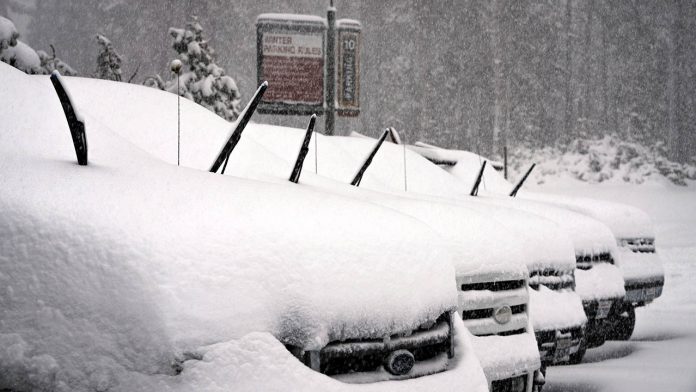“Hope for the best, prepare for the worst” is a proverb that dates back hundreds of years. It’s also a phrase that car dealers should take to heart regarding disaster preparedness. Having a worst-case scenario plan in place can mean the difference between an operational hiccup and financial ruin.
Last September’s Category 4 Hurricane Ian put many Florida car dealers in emergency mode, and those with defined plans got back to business that much quicker. Having these procedures ready makes sense for car retailers of all sizes.
“With more than 230 stores across the country, it is essential we have plans in place to prepare for and respond to natural disasters such as hurricanes and wildfires. We update, review and practice these plans annually,” remarked Eric Chase, CarMax Assistant Vice President, Asset Protection.
Key components of a disaster preparedness plan
A disaster readiness plan will be unique for each dealership but will have core elements, including:
Insurance and plan reviews
Set a time to review insurance coverage once or twice a year. This step is essential as inflation means higher replacement costs and the need for a policy that reflects the increases. At the same time, analyze that everything in the plan is updated. What made sense last year may no longer be applicable if staffing or operations have changed.
Communications
A disaster plan is only as good as your ability to communicate critical messages. Ask yourself a vital question, how quickly can I reach staff and customers in an emergency? If this can’t be done in minutes (versus not hours), then it’s time to get to work on a communications plan.
For staff, phone numbers and email addresses should be accessible at a moment’s notice. If you use an internal messaging system like Slack or Microsoft Teams, have this access built into the plan. You’ll also want redundancies in place in the event of power failures or spotty cell phone coverage.
Depending on the size of your operation, consider including media contacts to advise on closures. It never hurts to have help spreading the word in an emergency.
Operations
The operations component of a disaster preparedness plan basically covers “who does what and when.” This portion of the plan details who is in charge, assigns specific roles, and designates action thresholds (do this if that happens). Importantly, everyone who may be called upon to help in an emergency should be aware of their responsibilities long before there’s any potential for trouble. Equally as vital is defining alternate staff backups, as disasters have a knack for occurring when key employees are on vacation.
Scope of a dealership disaster plan
Any disaster readiness plan should have procedures and contingencies for these five areas.
1. Staff
Employees are the lifeblood of every dealership, so it only makes sense that emergency planning takes staff into account. Generally, you’ll want to divide any actions into three phases: before, during, and after the disaster. Keeping staff informed throughout the incident helps reduce stress and lets management focus on critical matters. Post-disaster plans for employees should go beyond basic workplace needs. CarMax’s Chase reports, “Depending on the situation, we may also deploy emergency supplies to impacted associates such as water, food and baby formula.”
2. Customers
Think about customers in two categories: on-site and off-site. Dealing with on-site customers matters if there’s an immediate emergency, like an approaching tornado. For example, the plan should designate a sheltered area far from large showroom windows in case of a nearby twister. And managing off-site clients primarily involves informing them about the dealership’s operating status. However, have options (like expedited repairs) for service customers needing their vehicles to comply with an evacuation order.
3. Buildings and facilities
Disaster preparedness for a dealership also incorporates its buildings and other facilities. These plans should identify who’s in charge of readying the structures for what’s coming, who and what determines when the buildings get closed and reopened, and post-disaster alternatives if the facilities are impacted.
4. Inventory
The last thing any dealer wants to do is move hundreds of cars, but the alternative of ruined cars and insurance claims is also unpleasant. Plus, losing precious inventory during times of tight supply can be equally challenging. Not every pending disaster will allow for securing in-stock vehicles, but building in contingencies can make all the difference. For example, dealers in flood-prone areas should make advance arrangements to use elevated garages (like at shopping malls and hotels) in case of potential rising waters. Plans should also spell out what to do with customer cars in the service department.
5. Data and documentation
Needless to say, having data and paperwork backups are must for any emergency management plan. This is good business, even if there’s no disaster on the horizon. Theft or fire is all that’s needed to disrupt everyday operations. Keeping duplicates of essential information should involve an off-site provider far from the disaster zone.
Did you enjoy this article? Please share your thoughts, comments, or questions regarding this topic by connecting with us at newsroom@cbtnews.com.
Be sure to follow us on Facebook, LinkedIn, and TikTok to stay up to date.
While you’re here, don’t forget to subscribe to our email newsletter for all the latest auto industry news from CBT News.




